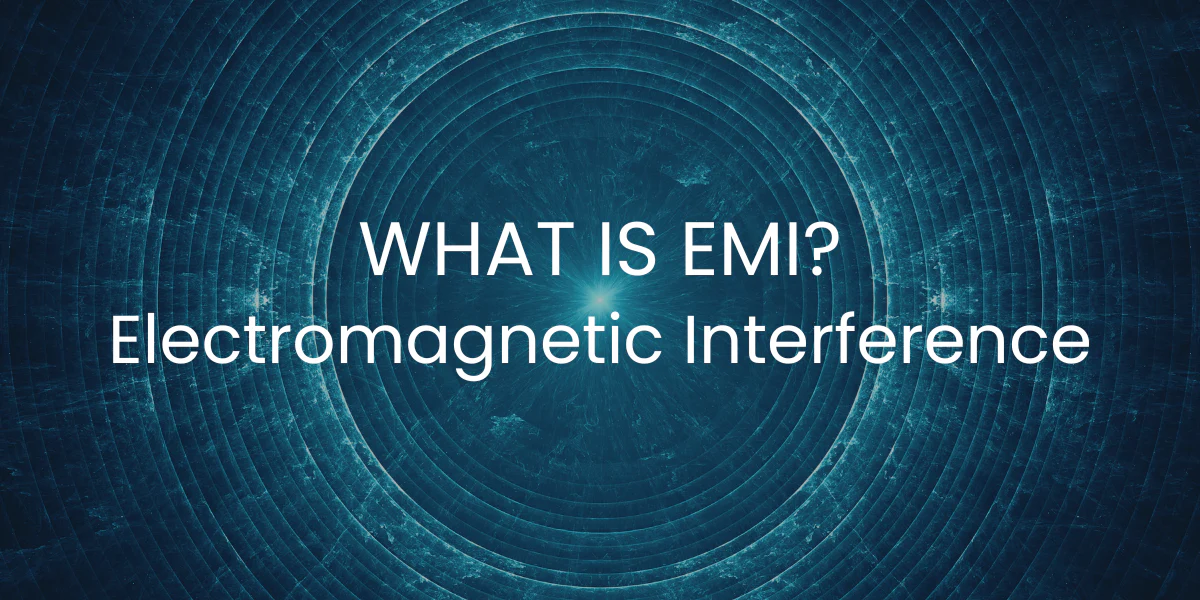
Imagine you're listening to your favorite radio station, and suddenly, the music gets fuzzy or disappears altogether, replaced by an annoying buzz. What you've just encountered is a common example of electromagnetic interference (EMI). In our world, filled with gadgets and electronic devices, understanding EMI is more crucial than ever. This blog aims to unpack the mystery of EMI in simple terms, so let’s dive in!
What is Electromagnetic Interference?
Electromagnetic Interference (EMI), also called radio frequency interference (RFI) when it involves radio waves, is a kind of disruption that messes with electrical circuits. This disruption can come from signals sent out by other devices around them. These signals can weaken how well the circuit works or even make it stop working completely.
Think of it like this: when you throw a stone into a calm pond, it creates ripples that spread out across the water. Similarly, electronic devices also create "ripples" — but these are invisible electromagnetic waves. When these waves cross paths with other electronic devices, they can cause disturbances, much like the way rough waters can disrupt the smooth sailing of a boat.
What Causes Electromagnetic Interference?
EMI, Electromagnetic Interference can be caused by a wide range of sources, both natural and human-made. Natural sources such as lightning, solar storms, and solar flares send out a massive burst of electromagnetic energy. It can also come from everyday human-made sources like the motors in household appliances, cell phones sending signals, or even fluorescent lights. These sources can accidentally send out electromagnetic waves that interfere with other devices nearby, causing them to act up, perform poorly, or even stop working for a while.
Natural Sources:
Human-Made Sources
Infrastructure
How Many Types of Electromagnetic Interference?
EMI can be broadly categorized into two types based on how the interference is propagated or transmitted from the source to the affected device:
Conducted EMI
Conducted EMI occurs when the interference is transmitted through conductors or wires. This type of EMI travels along electrical pathways, such as power lines, grounding circuits, or data cables. It's often seen in electrical circuits where interference enters through the power supply or interconnecting cables and can cause malfunctioning of electronic devices. Measures like filtering and using shielded cables can help mitigate conducted EMI.
Radiated EMI
Radiated EMI is transmitted through the air in the form of electromagnetic waves. This type doesn't rely on physical conductors; instead, it spreads like radio waves and can penetrate most non-conductive materials. It's the kind of interference you might experience when a cellphone interferes with a radio or a microwave oven disrupts Wi-Fi signals. Shielding electronic devices in metal enclosures and using antennas designed to minimize unwanted emissions are common strategies to reduce radiated EMI.
Radiated EMI can be separated into narrowband EMI and broadband EMI:
What Are The Effects of Electromagnetic Interference?
Many sources of electromagnetic interference (EMI) are often not readily apparent in a data center. Uncontrolled electromagnetic fields (EMFs) can negatively impact all hardware within the data center, including servers and cables, and also heighten susceptibility to EMF-based attacks.
Impact on Data Centers and Hardware
When data center cables are situated near strong EMFs, they can be subjected to unwanted currents and voltage surges. This generates electrical "noise" that disrupts the performance of the applications these cables support. Moreover, EMI can cause data packets to go undetected by remote receivers, leading to packet retransmissions and network congestion. Additionally, low-frequency EMI can severely impair the functionality of data center hardware, potentially resulting in the loss of data stored on hard drives or SSDs.
EMF-Based Attacks
EMI can be exploited by hackers to infiltrate data centers without physically breaching the facility. This could involve:
How to reduce electromagnetic interference?
To prevent EMI, opt for high-quality electronics from reputable suppliers, as mandated by FCC emission standards in the US (similar regulations exist globally). Cheap or counterfeit electronics often lack proper testing or shielding, increasing the risk of causing and being affected by EMI. Additionally, modern error correction and filters can help mitigate the impact of nearby EMI sources.
In high-speed networking, addressing EMI is crucial. For wired networks, separating power and data lines is essential, while shielded twisted pair cables provide superior signal integrity. Fiber optic cables, immune to EMI, can replace copper cables. Planning for wireless networks should consider transmission site density, nearby radio sources, and high-power transmission lines.
Medical devices often face legal mandates for EMI shielding and testing. Hospitals commonly require cellphone shutdowns to prevent interference with sensitive equipment.
In highly sensitive scenarios, Faraday cages are employed to shield devices or rooms from external EMI. Radio telescopes are frequently situated in remote areas far from populated regions to minimize EMI.
How does C&T prevent electromagnetic interference?
All of C&T's products are FCC-certified, ensuring compliance with strict limits on electromagnetic radiation emissions. By controlling the amount of electromagnetic energy radiated by the device, FCC-certified products help minimize the potential for interference with other electronic devices.
Additionally, before receiving FCC certification, products undergo rigorous electromagnetic interference testing to validate compliance with EMC standards, evaluating performance under various conditions to ensure emission and immunity levels meet requirements. As a result, consumers can have confidence that FCC-certified products have been thoroughly evaluated for their ability to mitigate EMI risks.